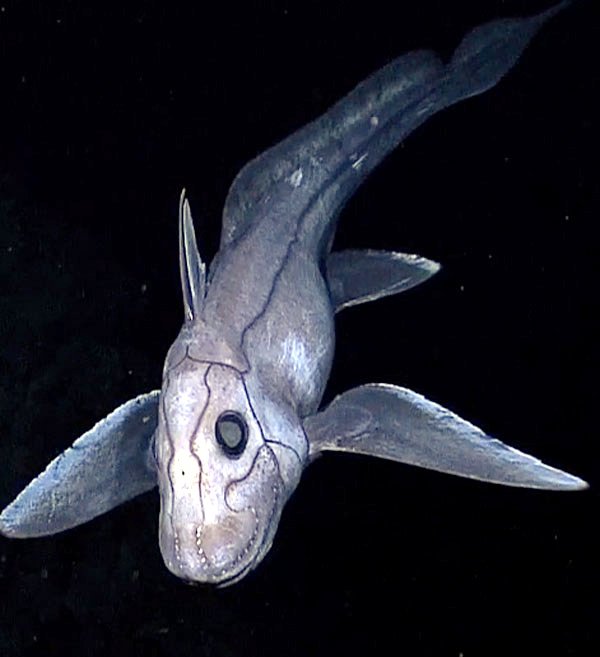We’re loving your cute weirdness, baby ghost shark

Bec Crew
Bec Crew

Found near New Zealand’s South Island by a team of scientists from the country’s National Institute of Water and Atmospheric Research (NIWA), this juvenile deep-water ghost shark is thought to have very recently hatched from an egg capsule laid on the sea floor.
The ghost shark was accidentally gathered in a net during a recent survey, conducted by the scientists at a depth of about 1,200 metres below the surface.
Given how rare it is for such young specimens to be found, says one of the team, Dr Brit Finucci, it’s a valuable opportunity to learn more about chimaeras – a fascinating group of cartilaginous fish (meaning their skeletons are made primarily from cartilage, not bones).
Despite their common name, ghost sharks are not actually sharks at all.
“From better studied chimaera species, we know that juveniles and adults can have different dietary and habitat requirements,” says Dr Finucci.
“Juveniles also look dissimilar to adults, having distinctive colour patterns. Finding this ghost shark will help us better understand the biology and ecology of this mysterious group of deep-water fish.”
Dr Finucci says they can tell this baby is very young, because it has a “full belly of egg yolk”. When baby ghost sharks hatch from their egg capsules, their first meal will be the nutritious coating of yolk, laid by their mother to give them a head start in life.
This ghost shark baby is thought to belong to the Hydrolagus genus, members of which are found in Atlantic, Indian and Pacific Oceans.
There are more than 20 known species, half of which were discovered in just the past two decades. Depending on the species, they are referred to as ratfish, rabbitfish and ghost sharks, the latter due to their eerie appearance:

Ghost sharks can grow to almost 2 metres long. The tiny dots that run along the snout of the one in the image above are sensory pores, which help it to detect the movements of other animals through perturbations in electrical fields.
Fully grown ghost sharks have venomous spines near their dorsal (top) fins, and in most known species, the males have a retractable sex organ, called a tenaculum, on their foreheads, used for mating. (We’ll leave any relevant jokes to your imagination.)
Here is some very rare footage of an adult ghost shark. The species, Hydrolagus trolli, has been sighted near New Caledonia, New Zealand and southern Australia:




